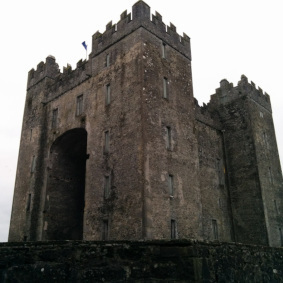https://www.kansallismuseo.fi/en/olavinlinna
https://www.openstreetmap.org/relation/11335890 Street view: https://goo.gl/maps/Q7pKKzddW5KE9dK28
Opening hours depend on season. Check here: https://www.kansallismuseo.fi/en/olavinlinna/info The middle courtyard has been covered and converted to a stage for plays and opera productions.
The fortress was founded by Erik Axelsson Tott in 1475 under the name Sankt Olofsborg in an effort to profit from the political turmoil following Ivan III’s conquest of the Novgorod Republic. It was sited in Savonia so as to lay claim to the Russian side of the border established by the Treaty of Nöteborg.
One of Tott’s letters from 1477 includes a passing mention of foreign builders invited to Olofsborg, probably from Reval, where the city fortifications were being extended. It was the first Swedish castle provided with a set of thickset circular towers that could withstand cannon fire. It is not by accident that a network of lakes and waterways forms the setting for the castle, for these would seriously impede a prospective Russian offensive.
The three-towered keep was completed in 1485, and the construction of the outer curtain walls with two towers was initiated immediately. They were completed in 1495. The castle is roughly a truncated rhomboid with keep on the western side of the island and the curtain walls and outer bailey to east. One of the towers of the keep, St. Erik’s Tower, has a bad foundation and has since collapsed. One of the towers of Bailey, the Thick Tower, exploded in the 18th century. A bastion has been built on its place. The castle was converted into a Vaubanesque fort in the late 18th century with bastions.
Olofsborg withstood several sieges by the Russians during the First and Second Russian-Swedish wars. A brisk trade developed under the umbrella of the castle towards the end of the 16th century, giving birth to the town of Savonlinna, which was chartered in 1639.
While the castle was never captured by force, its garrison agreed to terms of surrender twice; first to invading Russians on 28 July 1714 and the second time on 8 August 1743, with the latter conflict’s peace treaty in form of the Treaty of Åbo leading to the castle and the entire region being seceded to Empress Elizabeth of Russia. During the Russian era Alexander Suvorov personally inspected rearmament of the fortress.


That’s a very interesting positioning. I can understand why they’re end up surrending. A siege would be extremely effective against that fortress.
My initial thought went to the weather, though. Does that body of water never change in level or become aggressive?